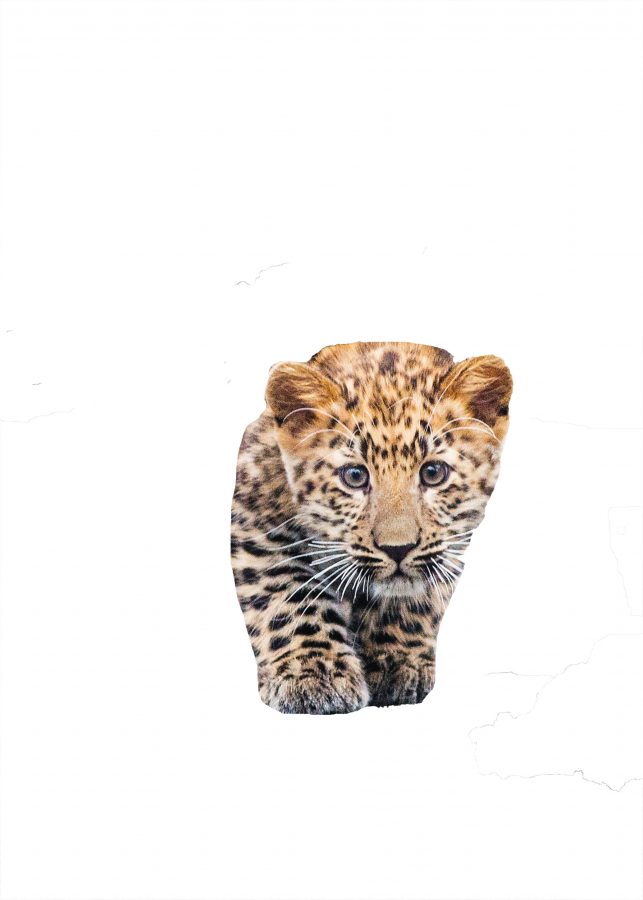Endangered animals attract attention at Brookfield Zoo
Numerous baby animals welcomed to the zoo
January 27, 2017
Temur, one of only 300 Amur Leopards estimated to be alive today, is 5 months old and made his debut in November 2016 at the Brookfield Zoo. The zoo has been fortunate to obtain multiple endangered baby animals, including two 5-month-old Snow Leopard sisters and an endangered baby gorilla.
“Temur is one of the most endangered animals in the world for many reasons, particularly loss of habitat,” Veteran Big Cats Zookeeper Christy Mazrimas-Ott said. “There are roughly 50 left in the wild and we were fortunate to obtain one.”
The zoo was able to gain numerous baby endangered animals due to the Species Survival Plan (SSP). The SSP is a program among zoos across the United States with the goal of maintaining genetic diversity as well as healthy populations.
No matter how endangered a species is, they receive the same treatment as other animals in the zoo.
Because Amur Leopards are incredibly low in population, zookeepers are very particular in managing genetic diversity by pairing unrelated animals for breeding. One example of this was when Temur’s mother was transferred from St. Louis, and the father was obtained from France, Mazrimas-Ott said.
Although Temur is an adorable attraction, the two young Snow Leopards Malaya and Daania are extremely popular to visitors as well.
“The Snow Leopards are popular because they are so social,” Student Employee Emma Hawkins ‘17 said. “A lot of baby animals hide or sleep, but the baby Snow Leopards are always running and jumping around.”
Additionally, the physical beauty of snow leopards results in large crowds.
“Snow Leopards are excellent jumpers,” Mazrimas-Ott said. “They can be standing still and next second be flying through the air. They’re cute, extremely light and agile.”
In addition to being one of the cutest animals in the park, their popularity can be attributed greatly due to the endangerment of the species.
“I think most [people] find them to be cute and playful,” Jason Crean zoo consultant and head of the Zoology Club said. “However, others also see this as a big win for conservation efforts.”
The SSP has the goal of maintaining genetic diversity, and the program has dictated that it is best to trade one of the Snow Leopard cubs to a different zoo for breeding purposes, and have one remain at Brookfield Zoo.
Another recent addition was Zachary, a Western Lowland Gorilla. The main goal of this infant’s debut was to be nurtured by his stable family, particularly his mother Kamba, as well as gaining social skills by playing with a fellow gorilla child, Nora, nearly 3 years old. The two are often rolling and running around, teaching Zachary new social skills as well as allowing him to have fun.
“Gorillas live in social groups where there are many eyes watching,” Crean said. “They learn not only from their parents, but also from other adults from whom they model their behavior.”
As much as Zachary enjoys “play-time,” he will be seen constantly clinging to his mother’s back and abdomen during his multiple month nurturing phase, Crean said.
While many animals are young when they first arrive to their habitats, they are often not released for numerous months.
“Because zoo habitats are designed to be larger and have more features for enrichment, [baby animals] are monitored for some time so that zoo staff can intervene if necessary,” Crean said. “For the most part, zoos prefer animals to raise their own young.”
Due to the births of baby endangered animals, it allows zoos to have more choices when planning breeding situations, Crean said.
“The birth of any endangered species should be celebrated,” Crean said.



















![Movie poster for '[Rec]" (2007).](https://www.lionnewspaper.com/wp-content/uploads/2023/04/rec-640x900.jpg)



